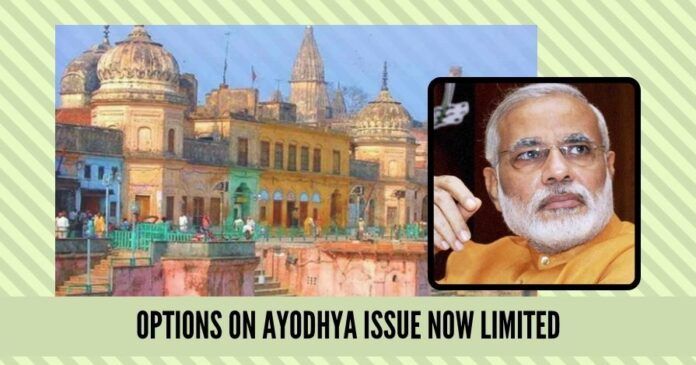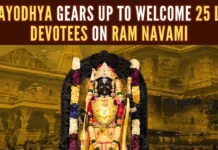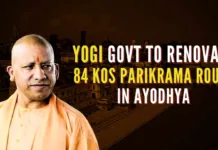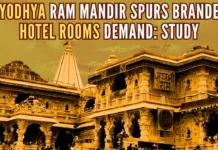
The ball is now firmly in the Modi Government’s court. The options they have on Ayodhya issue are now limited.
Only about a month ago, the Supreme Court of India had brushed aside an attempt to delay hearing on the Ayodhya land title dispute, when it dismissed a plea which sought to muddy the waters by demanding a review of a 24-year old order (that a mosque was not integral to Islam). In doing so, the Bench cleared the way for the commencement of hearing on the core issue of claim of the disputed land, on October 29. It was then understood that there would be day-to-day hearings which would facilitate an early disposal of the decades-old matter. But on October 29, the apex court delivered a shock: It said that the Ayodhya matter was not among its priorities; it postponed the hearing to January 2019, and it and gave no assurance of a day-to-day hearing.
The Ayodhya matter should have been a priority for the new Chief Justice of India.
What changed in this one month? The Chief Justice of India. As Chief Justice, Dipak Misra had headed a Bench which not only rejected the delaying tactic of dragging in the 1994 order on mosque not being an integral part of Islam, but also thwarted an earlier attempt by the Sunni Waqf Board (through its lawyer and senior Congress leader Kapil Sibal) to postpone hearing of the case until July 2019 — after the Lok Sabha election. On October 29, it was the new Chief Justice of India, Ranjan Gogoi, who headed a three-judge Bench which announced that the Ayodhya case was not a priority for the court. What a coincidence that a Bench led by the new Chief Justice of India should be heading towards fulfilling Sibal’s demand, albeit inadvertently.
Given the present situation, it is unlikely that a verdict on the matter is going to come early. For one, without an assurance of day-to-day hearing, one can only speculate on the time it will take for the issue to be legally settled. The best case scenario would have been a judgement latest by March in the eventuality of a day-to-day hearing, post-January 2019. That would have been a month or so ahead of the Lok Sabha poll. Now, we don’t know.
The Ranjan Gogoi-led Bench’s observation that the issue is not a priority for the apex court, is baffling. Even from a purely legal perspective, the Ayodhya dispute ought to be a priority. It has been with various courts for decades — indeed, right since Independence, and even before. Soon after the Allahabad High Court gave its verdict (dividing the land equally among the three parties to the dispute), the discontented parties approached the Supreme Court, where the matter stands to date. For nearly eight long years, the apex court has been seized of the issue, but there had been little forward movement. It was only last year that the court gave an indication of its desire to dispose of the matter at the earliest, and since then hopes soared that, at last, a legal resolution was round the corner. Now, those hopes have been dashed.
The Ayodhya matter should have been a priority for the new Chief Justice of India for another reason. The decades-old conflict has contributed to creating fissures in society, with the majority and the principal minority communities at loggerheads. Religious sentiments are involved. An early resolution could have paved the way for both these groups to reconcile in the larger national interest. Besides, judicial promptness would have brought to a grinding halt the politics that has been played by various parties, both in favour of and against the construction of a Ram temple at the disputed site. It is unfortunate that, just when the matter came so close to an early resolution, the process has received a setback with the apex court’s casual approach.
An ordinance is the only way out. The BJP could gain in multiple ways.
The ball is now firmly in the Modi Government’s court. It has the following choices: One, wait for the court verdict — with nobody knowing when that will come — and face the ensuing backlash. Two, continue to verbally reiterate its support for the construction of a Ram temple at the disputed site and hope its stand will find takers. And three, act for a change and bring in an Ordinance that clears the road for the construction of the temple. The first two options would have worked in a different time and day, but now patience has run out and the people are unwilling to buy into passive tones of support. An ordinance is the only way out. The BJP could gain in multiple ways. First, the Ordinance will burnish its pro-temple credentials. Second, it will be tricky for its main national rival, the Congress, to oppose a lawful move for the temple’s construction. Third, the Ordinance will take the wind out of the sails of troublesome allies such as the Shiv Sena (which has upped the ante on the matter) and also a bunch of Hindu religious leaders who have been critical of Prime Minister Narendra Modi for his Government’s failure on the Ayodhya issue.
The BJP may claim that the construction of a Ram temple at the disputed site in Ayodhya is a matter of faith for it, and not an issue of politics. But the fact is that the party could reap significant electoral gains in case it proactively pursues the issue. In any case, faith is of no consequence if the faithful do not have the courage to demonstrate it. Since the Government had the will to use the Ordinance route to criminalise the practice of instant triple divorce among the Muslim community, and to dilute an apex court direction on an Act that provides protection to Scheduled Castes and Scheduled Tribes, it should also use an Ordinance to settle a matter that involves the faith of millions of Indians. It is a compelling argument.
Note:
1. The views expressed here are those of the author and do not necessarily represent or reflect the views of PGurus.











Ordinance should be brought by state government not only for Ram janmabhoomi also for Krishna janmabhoomi and Kashi, even if it fails ok and it will expose the cabal and coruupt judiciary..
Rightly said. Ordinance should be passed for immediate Construction of SHRI RAMA MANDIR at Ayodhya and SHRI Krishna MANDIR at Krishna Janma bhoomi and SHRI Shiva MANDIR at Kashi.
Ordinance route won’t work. Mr. Bhushan will file a petition saying it violates the Constitution and the SC will (a) prioritize hearing that petition and (b) rule in his favor. AIBMAC and Sunni Waqf Board have already said they will not abide by any law / ordinance passed by the Govt. but will only defer to the SC. Mr. Modi’s incompetence / disinterest in dealing with the SC and his procrastination / insouciance on issues dear to Hindus are coming back to bite him.
It was expected from Gogoi as he showed his colors and played into the hands of Sibal and Cabal, Modi didn’t create this situation, UP government should pass an act in assembly and start all the infrastructure around the temple immediately without touching the sanctum. Deflect it from the center. Let Gogoi be in the corner when fresh petition to halt the Legislative order from UP is challenged. We know we have KM and Lokur and another crooked judge so this Natak will continue. Why center is again and Again appointing Congress leaning people who are corrupt to the core. Let SS give his opinion.